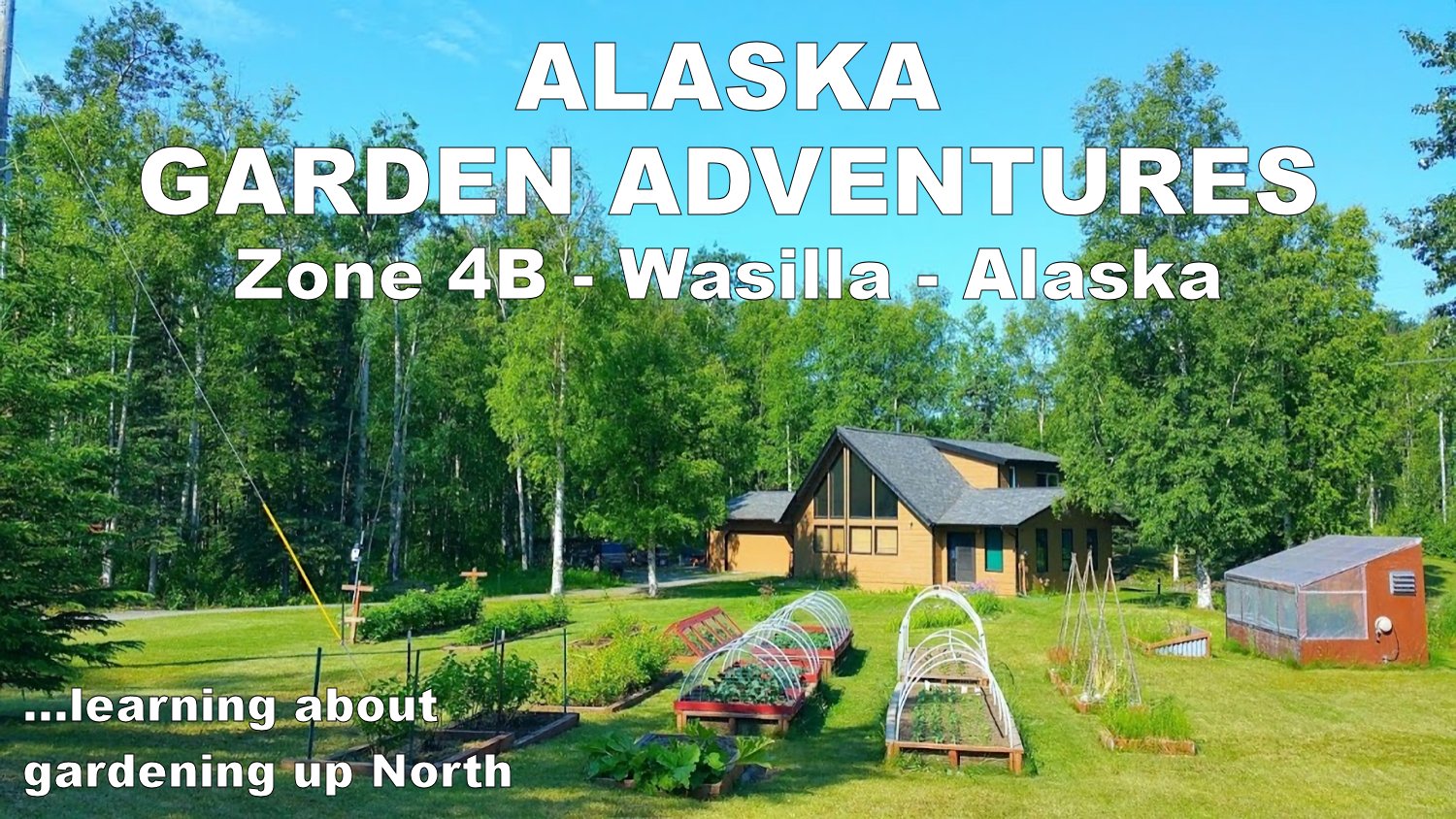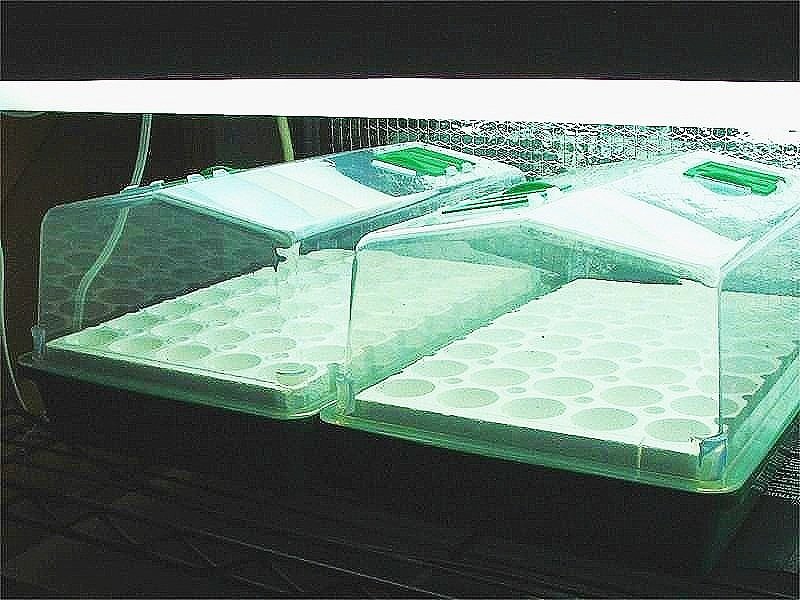More snow today on March 9 - another 4-6" so far and still coming down. About 18-20" on the ground now. In Wasilla Alaska - the last weekend in May is the start for outdoor garden season. Timing is very important to have your plants ready as soon as the weather is warm enough to move them outside. The Wasilla, Alaska area, that we call the Matsu Valley, is in Hardiness Zone 3 to 4. Our average last Frost date is about May 20. If you start your garden seeds too early you can end up with very large plants taking over your house by early May. This year I held off until the first week in March. When I moved here I started growing the local favorite cold tolerant varieties: Glacier, Early Girl, Early Tanana, and Stupice tomatoes. Growing tomatoes outdoors, where I live, is not easy and when I started gardening out here at this property I did not have my own greenhouse for the first few years.
I use a special seed starting system from Park Seed Company that they call the Bio Dome that worked very well for me last year. They use foam grow plugs set into a floating block and come in 40 - 60 - 80 - and 120 cells per tray. It looks like the 60 cell tray may be replacing the 40 cell tray.
I have been using the 40 cell tray, but the 60 cell tray looks like the same cell size. They are bottom watered so you only add water to the tray about once a week and adjust the vents on top of the clear dome to control humidity.
I also use electric heat mats under the trays and I had nearly 100% germination.
I use 4 shelf 48X18 inch commercial units that can hold 4 Bio Dome trays side by side or 2 10X20” seed flats end to end per shelf. I originally used four foot T12 florescent shop lights. I bought all new 6500 degree daylight bulbs. Later I switched to brighter T8 or T5 high output florescent Lights. I really believe the major cause for weak and spindly seedlings is not enough light. A south facing window will help but grow lights are still necessary for healthy seedlings. I do not rely on window light at all and I have never used a small fan that some gardeners think will promote stronger stems. Adequate light is all it takes. Keeping your lights as close to your plants as possible is also important and I hang my lights on short chains so adjustment is easy. *Note: I have since switched to all LED Grow Lights. I use a timer switch to control the lights set for 16 hours per day. I hang 2 silver Mylar camping "Space Blankets" on the front and back of my shelf units as light reflectors.
March 3, 2010: Planted 80 vegetable seeds in 2 Bio Dome trays. All early cold tolerant verities...
30 Tomatoes... 25 Peppers... 25 Eggplant...
Saturday March 6 - some Tomato sprouts peeking through.
Sunday - about 10 Tomatoes were up and a few Eggplant.
Tuesday March 9 - 6 days after planting - 28 tomatoes are up and all 5 Eggplant. No Peppers yet.
* You can find more Seed Starting supplies on my Alaska Grow Buckets - Indoor Garden Shopping Page.
We have about 100 - 110 frost free days where I live - but we have about 20 hours of sun in June and that is the same as adding 2-3 extra weeks to our growing season. Those lucky enough to have a greenhouse can start their seeds a little earlier and move them out to the greenhouse when it is warm enough. My first attempt was a simple plastic covered hoop house in 2009. I did have my first ripe Glacier variety tomato very early on May 29, 2009 that I grew in my hoop greenhouse. Even though my Glacier Tomatoes were able to survive down to 25-28 degrees F on several nights, it was not without freeze damage and I am sure it affected my harvest. I was just not real happy with the small yields and the tiny fruit. A simple plastic sheet covered hoop house provides no insulation and no real freeze protection so a real greenhouse was needed probably with supplemental heat on really cold nights for a decent early tomato crop.






